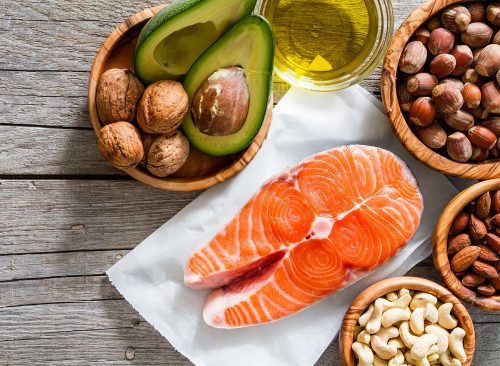Turn Off Your “Fat Gene” With 7 Weight Loss Strategies
Read if you've struggled with your weight.

“All my teenage and adult life, I’ve struggled with my weight, putting on pounds quickly,” says Leah Hardy, who has ricocheted from a size 10 to a clinically obese size 18 and gained more than 55 pounds during each of her two pregnancies. Tired of the yo-yo process, she took a genetic test to see if there was a fundamental reason why. According to the Telegraph, the Intelligent Weight Loss DNA Test looks at more than 40 genes and 50 SNPs. It involves a simple cheek swab mailed to a lab, then a follow-up call with a counselor. Hardy’s told her it was clear she was someone who’d always struggled with her weight. Read on to find out why, along with seven strategies to outsmart your predisposition to gaining weight if you’re in the same genetic boat.

Hardy’s test showed she had a common risk variant of “one of the first discovered, best understood and most influential obesity genes,” the Telegraph reports. It’s called the FTO gene, which stands for “fat mass and obesity,” but it can be referred to as the “fatso gene.” Everyone inherits two copies of the FTO gene, one from each parent, and if you’re one of the 16% of people who’ve inherited two high-risk copies, your lifetime risk of developing obesity increases by at least 50%, Hardy explains. Studies show that people with the FTO variants have higher levels of ghrelin, the “hunger hormone” and tend to make more fat cells when they overeat.

“While we can’t change our genes, their activity can be dialed up or down by other factors,” Hardy explains. One of those factors: Exercise. “Getting more active can reduce the risk of obesity associated with your risk gene by a third,” says Giles Yeo, a Cambridge professor and one of the foremost experts in the genetics of weight. Aim to get your heart rate up daily.

Some studies have found that eating a high-fat diet leads to a higher body-mass index in people with FTO risk genes. Opt for good fats that naturally occur in whole foods (such as extra-virgin olive oil, avocado, and oily fish like salmon), rather than saturated fats. Oleic acid, which is found in olive oil, can help regulate ghrelin.

“Regular mealtimes at four to five-hour intervals help retrain the rhythm of your appetite hormones,” says Hardy. “Try not to snack. Fast overnight for at least 12 hours.”

“Fill up on high-fiber, whole foods, such as vegetables, rather than processed foods high in fat and sugar, or processed starchy carbs,” advises Hardy. “Eat 20 to 30 grams of protein per meal (e.g. some chicken breast or salmon filet) to stave off hunger.”

Many ultra-processed foods (think chips, sugary cereals, hot dogs, fries, chicken nuggets—anything with a lot of chemicals in the ingredients list) are designed to make you eat more of them. People with the FTO gene variant are particularly vulnerable to cravings and overconsumption.

“Lack of sleep can result in increased ghrelin and reduced leptin,” Hardy explains. In a 2021 study published in JAMA Network Open, having a bedtime after 10 pm was associated with a 20% greater risk of obesity or having a large waistline. The risk was almost double that (35% to 38%) for people who went to bed between 2 and 6 am. Researchers think late bedtimes might increase the production of stress hormones, which tell the body to hang on to belly fat.

“Some sugar-sweetened drinks contribute to raised BMIs in people with risk FTO genes,” Hardy says. “Swap syrupy lattes, smoothies and fruit juices for water, black tea and coffee.” Green tea contains high levels of the antioxidant EGCG, which reduces FTO activity and can lower blood sugar and improve insulin response.














